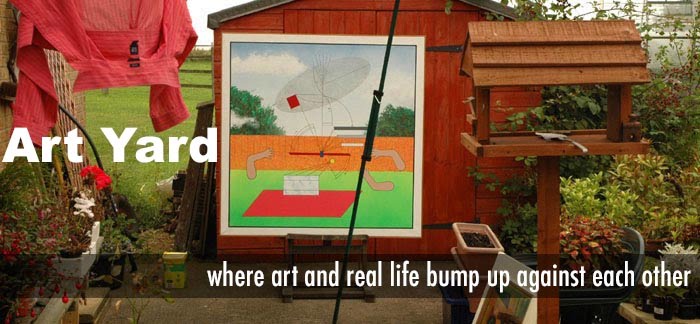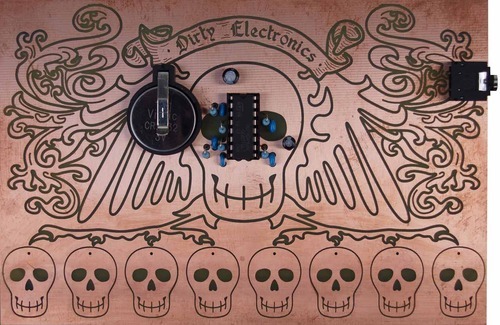
Pinned to the living room wall of our rented cottage in Saint Julien de Mailloc was this rather faded poster.
Although it showed a painted image, it was only after a few days that I realised that the painting was not the entire image but only the decorative element in a tightly cropped photograph. Most of the detail that would give clues to the scale and context of the painting were excluded, but I suddenly realised that the chevron shape at the top was the gable end of a roof and the band of faded green across the bottom of the image was vegetation.
Although Léger had been a hero, influence and inspiration to me in my student days, I had no idea that we were holidaying in his native countryside, where he returned to live out his final years. Having travelled to France without computers, and with no wi-fi, we were without the means to do an online search for information, so were left in ignorance of the image's significance.
The text on the poster gave the location of the village, so it was easy enough to plan a slight diversion on the next day's trip to the pretty town of Liseux. The winding back roads that took us to Lisores were a delight in themselves as they meandered through fields and orchards sleeping in the Summer sunshine. The village communities in this part of France seemed spread out, like our own village of Saint Julien de Mailloc. Their centres seemed relatively small, little more than hamlets, but with large numbers of outlying small farms. Lisores was no exception, and seemed to be a pretty little community on a steep hillside, scattered around a modest little church. While there, we were sufficiently intrigued by an extravagantly oversized mausoleum in the churchyard to stop and take a look.

There were no signs or clues in the village showing us where to find the building on the poster, nor anyone around in the midday heat to ask. With two small restless boys in the back of the car impatient to get to the swimming pool in Liseux, it was time to abandon mission and press on.
However, my interest in Léger has been revived and I've since been able to find out the significance of Lisores. He was a local man and it would seem that the property was a family farm he inherited. He may have moved there briefly in 1940 following the German invasion of France before emigrating to the USA. He returned to France and Paris after the war and seems to have moved out to Lisores in the final years before his death in 1955. I can't be at all precise with the biographical details as the online sources I've used contradict each other in significant ways. Clearly, more thorough research is needed if one is to get a clearer picture of the part that Normandy and the farm at Lisores played in his life.
What my online searches do show is that we might have been disappointed if we had found the farm. At the time of the poster it was a museum, but it seems to have closed in the 1980's. Alexia Guggémos's Delire de l'Art blog posting in 2008 warned of the decay and dilapidation that was overwhelming the property:

"Elle n’est plus que ruines ! Le panneau indicateur qui y conduit est rongé par les mousses, le chemin d’accès envahi d’herbes folles, la maison elle-même perdue dans les ronces et les orties. Du portail, on aperçoit juste sa façade colorée, encore magnifiquement ornée d’une fresque de l’artiste. La seule qui ait survécu. Tout le reste n’est qu’éventration et massacre."
(It is in ruins! The sign pointing the way to it is eaten away by mosses, the path is overgrown with weeds, the house itself lost in brambles and nettles. From the gate you can see just the coloured facade, still beautifully decorated with a fresco by the artist. It is the only thing that has survived. Everything else is torn out and destroyed.)
More recently, a piece on the Ouest-France website in December 2009 paints a more hopeful prospect for the future. It is apparently being restored by its present owner, art dealer Jean du Chatenet, who plans to reopen it as a cultural centre by 2012.

La ferme musée Fernand-Léger pourrait rouvrir dans deux ans
Lisores Mercredi 30 Décembre 2009
Lisores Mercredi 30 Décembre 2009
It seems a shame that the world at large seems to have neglected this aspect of Légers's legacy. Though M. du Chatenet's plan cannot bring back what decay and depredation have taken away, it should at least preserve and give new life to what is left. We must wish him every success in his ambitious venture.









